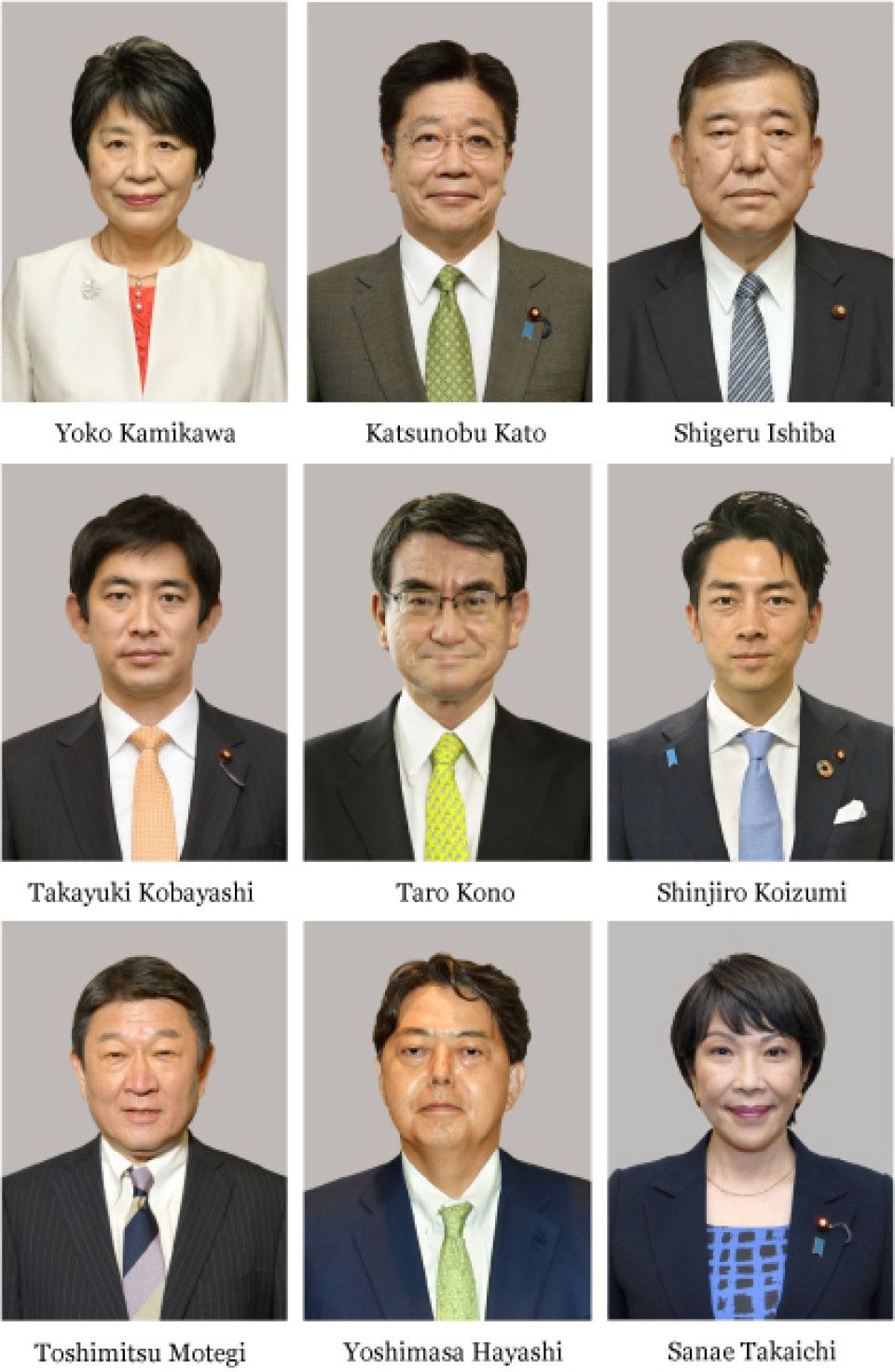A record nine candidates have begun a 15-day election campaign to become the next leader of Japan’s ruling Liberal Democratic Party and succeed Fumio Kishida as prime minister, as the party tries to restore public trust following the slush fund scandal.
The leadership elections on September 27 will be held without the direct influence of the intra-party groups at the centre of the money scandal. This circumstance, combined with the unusual breadth of the range of candidates, increases the likelihood that the vote will be split.
Whoever wins, the next LDP president will also have to help ease the pressure on households from rising prices and deal with security threats posed by an assertive China and a nuclear-armed North Korea, which launched several missiles just hours before the race began.
According to Kyodo News reportsthe new leader is almost certain to become prime minister, probably on October 1, as both houses of parliament are controlled by the LDP and its coalition partner, the Komeito party. The Komeito is also scheduled to elect its new leader this month, while the main opposition party, the Constitutional Democratic Party of Japan, is also likely to do so.
After revelations of undeclared funds in LDP factions led most of them to decide to disband, party renewal is a common promise among leadership hopefuls. Kishida is not seeking another three-year term beyond September and has called for a new LDP.
The candidates include two young men in their 40s and two women who aspire to become Japan’s first female prime minister. Four are current Cabinet members.
“In the face of public distrust in politics, I will do everything in my power as president to reach a point where our party has fully explained itself and the Japanese people are convinced,” former Defense Minister Shigeru Ishiba said in a joint televised appearance with the other candidates.
The contenders outlined their visions for Japan, stressing the need for the country, currently the world’s fourth-largest economy after Germany, to be “reformed,” “stronger,” more “competitive” and “self-sufficient.”
In the coming days, they are expected to discuss how they, as future leaders, would support the economy by reinforcing a positive cycle of rising wages and prices, how to address social security challenges amid a rapidly aging population and how to deal with the LDP’s goal of revising the constitution that renounced war. Another contentious issue is whether married couples should be allowed to use different surnames.
Ishiba, 67, a public favourite, is running for his fifth and final bid for the LDP leadership, which he describes as the “culmination” of his 38-year political career. He has earned recognition as an expert on security, agriculture and regional revitalization policies.
Another familiar face and rising star in the LDP, Shinjiro Koizumi, 43, hopes to follow his father, Junichiro Koizumi, a reformer and one of the most popular post-war prime ministers, into the premiership. While some point to the younger Koizumi’s lack of experience, others see in him the potential to become the new face of the party.
“I promise to push through three reforms in one year. They are political reform, regulatory reform and creating more opportunities in life,” Koizumi said.
After receiving Kishida’s nod, Digital Affairs Minister Taro Kono, 61, a political maverick and social media-savvy lawmaker, was the first of the current Cabinet members to announce his candidacy. Kishida defeated him in a runoff in 2021.
The outspoken former foreign and defense chief said Thursday that LDP candidates should discuss “what the world should be like, not just Japan,” citing the seriousness of the security situation due to “dictatorships” such as China and Russia.
Kishida’s right-hand man, Chief Cabinet Secretary Yoshimasa Hayashi, 63, is making his second bid to become party leader. Like Ishiba, he is an expert in a range of fields including diplomacy, education and agriculture, and describes himself as “the go-to guy” when in trouble.
Foreign Minister Yoko Kamikawa, 71, took her time to secure the support of 20 lawmakers, a prerequisite for any candidate to stand. The former justice minister is one of two female candidates. Hayashi and Kamikawa belong to a now-defunct faction of relatively moderate lawmakers that has produced five prime ministers, including Kishida.
Also running are several conservative lawmakers who are expected to appeal to LDP members who shared the political vision of the late Prime Minister Shinzo Abe.
Economic Security Minister Sanae Takaichi, 63, who claims affinity for Abe, is running for a second term, promising to make Japan “stronger and richer.”
Former Economic Security Minister Takayuki Kobayashi, 49, and former Health Minister Katsunobu Kato, 68, who were top government spokesmen for Abe’s successor Yoshihide Suga, are running for the first time, potentially splitting the conservative vote.
Kobayashi acknowledged that the candidacy of a 40-year-old legislator for the party presidency is “something unprecedented,” but he is determined to lead the country. “Where there is a will, there is a way. There are no obstacles that cannot be overcome if we have a strong conviction and unite our forces,” he said.
LDP Secretary-General Toshimitsu Motegi, 68, has already rocked the boat by apparently distancing himself from a key government fiscal plan while serving as the ruling party’s No. 2. The former foreign minister has said that if elected, he would not resort to tax increases to fund part of a substantial spending increase planned to boost defense capabilities.
If no candidate wins an absolute majority of the 734 votes (367 from LDP lawmakers and 367 from grassroots members), a runoff election will be held on the same day between the two top-vote candidates. In the runoff, lawmakers will again cast 367 votes, while grassroots members will contribute 47 votes, one allocated to each of Japan’s 47 prefectures.














Add Comment